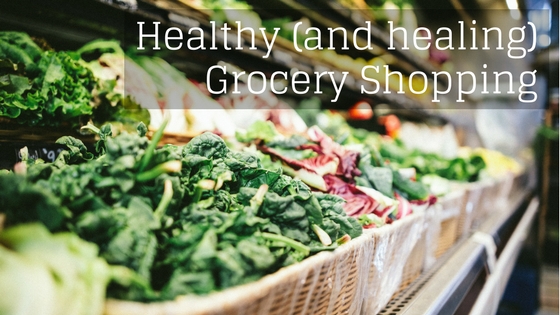
Written by: Ali Wiser, N.C.
A new month, a new theme! This month we’ll be focusing on healthy grocery shopping and meal planning. Throughout the month we’ll be sharing ways you can set yourself up for success when it comes to meal planning, grocery shopping and building out your pantry so be sure to follow us on Facebook and Instagram (@thespringatx) for weekly tips and tricks!
We’re kicking off this month’s theme with tips for healthy grocery shopping. For the majority of us, we are faced with the daunting task of sourcing our food from grocery store shelves. This concept is (relatively) new. Believe it or not, at one point in time, we did not have grocery stores, we grew our own food or shopped at local markets – oh the beauty of simpler times! These days, we are inundated with new products, ingredients and “foods”. What was once a straightforward task has now become confusing, complicated and overwhelming.
Well, fear no more! Today, we’re providing you with ways to navigate the grocery store so you’re able to focus on the most important the task at hand: filling your cart with healthy (and healing) whole foods!
Don’t panic, go organic!
When it comes to simple whole foods, particularly fruits and veggies, it’s important to purchase organic versus conventional sources. Why? Conventional foods are grown in chemically fertilized soil and are commonly sprayed with pesticides (i.e. toxins) that go directly from the food into our bodies when consumed. These toxins add stress to the body in an effort to detox and eliminate and when we’re trying to heal our bodies the goal is to minimize stress, not add to it! When you look at whole foods, it may look unharmed – it still contains proteins, fats or carbohydrates but they are missing other essential nutrients that have been known to protect us against disease and support optimal health. Although more expensive, by purchasing organic foods you’re actually getting more bang for your buck by consuming these essential nutrients with protective and healing properties.
Dirty Dozen, Clean Fifteen.
That said, there are a few exceptions to the rule. The Environmental Working Group (EWG) came out with a helpful list of fruits and veggies that are exposed to the most pesticides (The Dirty Dozen) and the least (The Clean Fifteen). If you’re on a tight budget, purchasing conventional sources is ok for the foods listed under The Clean Fifteen. But please note, The Dirty Dozen and Clean Fifteen lists were developed by EWG, not by our team at The Spring. Some of the foods listed below may not be included in your recommended diet protocol. Please consult a member of our team if you have any questions!

Avoid processed foods.
Processed foods are just that: processed, fake, manufactured. Interestingly enough, the occurrence of many of our health problems (autoimmune disease, diabetes, cardiovascular disease) increased as the food industry changed their focus from quality to quantity – from whole foods to processed foods. Whether we like it or not, processed foods have not been around long enough for our bodies to know how to function on these new “ingredients.” When processed foods become dietary staples – which is now the Standard American Diet – it can lead to health problems. A good rule of thumb is to purchase foods that do not have a list of ingredients. And if they do, find a food source with the shortest list and filled with ingredients that you recognize as whole foods and can pronounce.
If you’re purchasing meat…
Similar to humans, if animals are fed foods with toxins or contain substances that their bodies are unable to break down, they will develop an array of health problems. The saying, “you are what you eat” has never been truer. When we consume these low-quality sources, we’re putting ourselves at risk for exposure to the same toxins and stress as the animals. So, if you’re purchasing meat, look for these keywords for the highest quality sources.
- Organic, pasture-raised (poultry + eggs)
- Organic, grass-fed (beef + butter + dairy)
- Wild caught (fish)
Other quick tips when grocery shopping.
- Stay on the perimeter of the store. Have you noticed, all of the fresh foods (produce, meat, dairy, etc.) are typically placed along the perimeter of the store? That said, avoid going down the aisles but when you have to, stick to your shopping list!
- Read food labels. To start, focus less on the numbers and percentages and more on the ingredient list.
- Buy in bulk to save on costs. Some great bulk items include quinoa, buckwheat and raw nuts and seeds.
- Give the frozen section a try. Some argue that it’s better to purchase organic frozen fruits and veggies than fresh, especially for foods that are out of season and shipped long-distances because the produce is harvested and then frozen when it’s nutrients are the freshest.
- Avoid anything that says “light” or “lite” on the label. Low-fat or light typically means high amounts of added sugar to replace the lost flavor of the removed fat.
- Remember, margarine is not food. Replace it with grass-fed butter, ghee, extra virgin olive oil, coconut oil or avocados.
- Try something new! To add variety and keep things interesting, add something new to your cart each week. Some ideas: nori sheets, kombucha, sauerkraut or kimchi, a new flavor of organic tea, herbs and spices, avocado oil or fresh turmeric.
